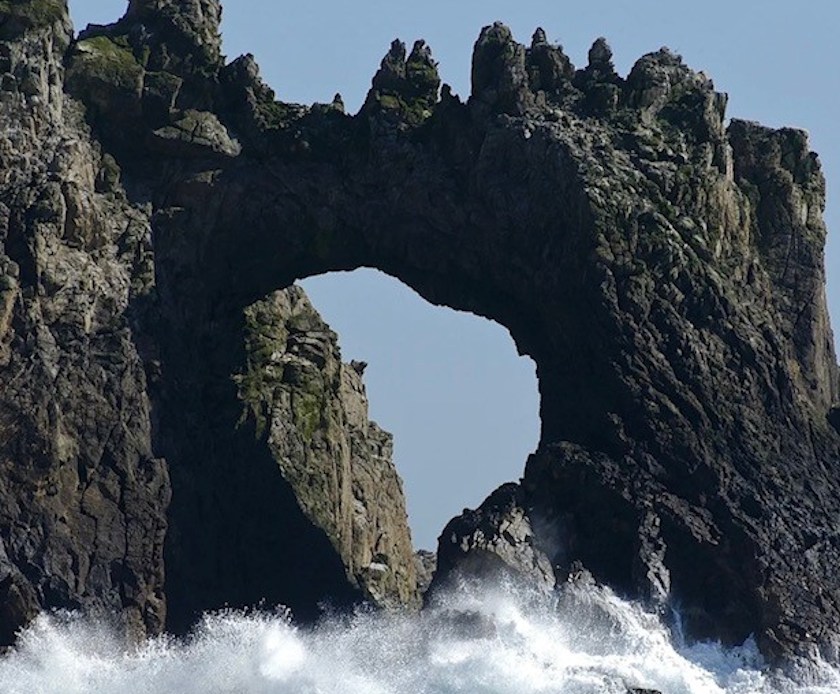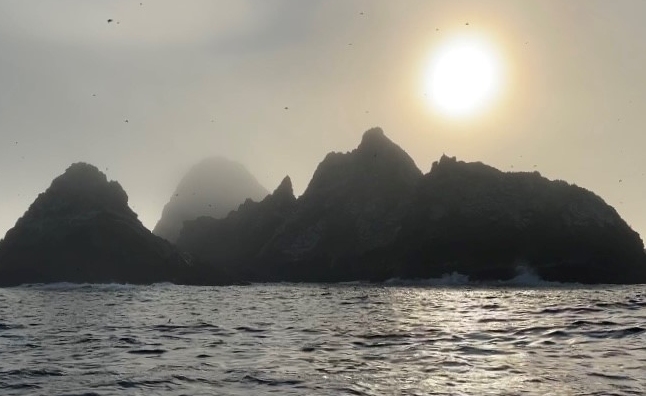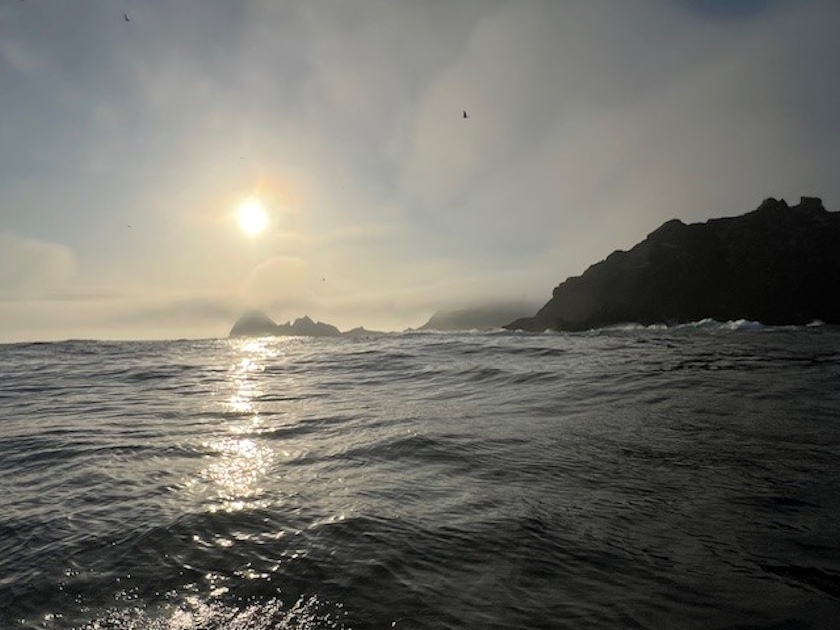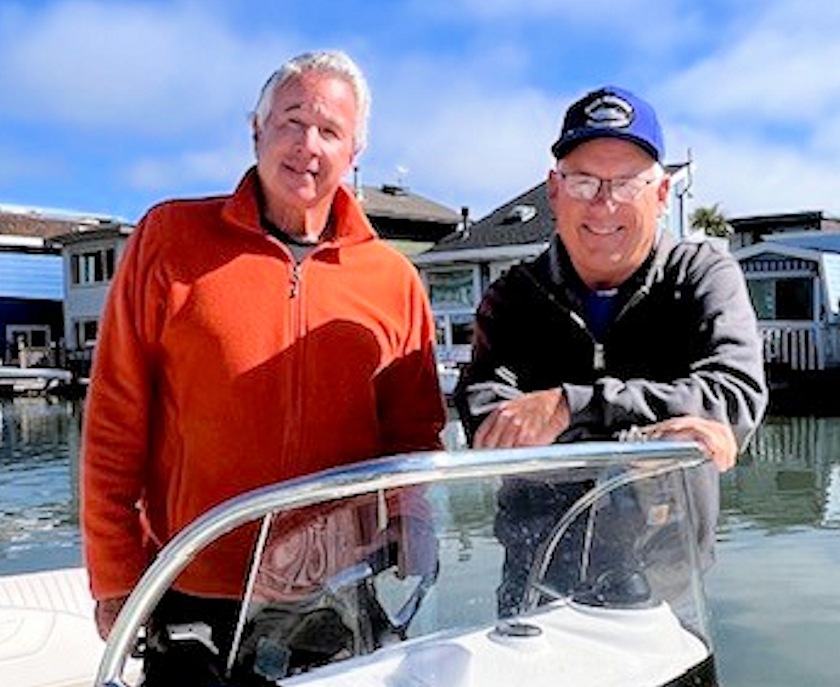In the pre-dawn hours, we (West Pier residents Court Mast and Stefan Krug) slowly motored our
17-foot Boston Whaler away from my floating home and into Richardson Bay. With two
spotlights focused on the dark water in front of us, we headed toward the Golden Gate Bridge
under the light of a nearly full moon. Our destination? Southeast Farallon Island, some 30 miles
west of San Francisco.
Southeast Farallon is the largest in a series of three small island groups, collectively known to
fishermen as “The Islands”. The Southeast island is also called The Devil’s Teeth in reference to
its forbidding, jagged appearance and the many treacherous underwater shoals in its vicinity.
Designated a national wildlife sanctuary, it is uninhabited except for a few wildlife researchers
from Point Blue Conservation Science. The islands are nesting grounds for hundreds of
thousands of birds including many rare aquatic species. And they are a breeding ground for fur
seals, elephant seals and sea lions, as well as a feeding ground for white sharks and whales.
We’ve made more than 100 trips to the Islands over the last four years as captain and
deckhand on larger charter boats, taking groups of passengers on all-day whale watching and
birding excursions. We’ve also long dreamed of making the trip in our small boat. We knew
such a trip would require optimal conditions: low wind, manageable swell, minimal fog, and, of
course, enough tidal water to escape our mud-flat floating homes. These conditions converged
on Wednesday, July 24.
Our planned route took us north along the Marin coastline, past Point Diablo and Point Bonita,
and across the notorious “potato patch.” We made our way as far as Muir Beach before turning
westward into fog for the long haul to the islands. We closely monitored the motor’s vital signs
and our GPS chart plotter, which we relied on to alert us to the presence of tankers and
container ships. We watched the moon disappear and the sun rise in fog as we passed the
yellow N Buoy, the two-thirds waymark in our journey.
As we neared the island, the number of birds in flight and in the water increased. We saw rafts
of murre birds, whose island nests were plundered for their eggs during the California Gold
Rush, and colorful and cartoonish puffins. Before the island became visible through the fog we
heard the din of birds and seals. The sounds of the islands are layered and raucous. Breaking
surf, the barking and bellowing of sea lions, elephant seals and fur seals, and the shrieking of
hundreds of thousands of murre birds make for a discordant and incessant soundtrack.
We watched the play of the rising sun and low-hanging fog as craggy rock formations emerged
and then disappeared from view. We spoke by VHF radio with our favorite island researcher,
Amanda Spears, whose cheery voice welcomed us as we began our clockwise
circumnavigation of the island. We quietly motored into Mirounga Bay, where a few curious fur
seals popped up from the water to check us out.
Rounding the southwest corner of the island, we toured the craggy west cliffs, continued past
the impressive rocky Great Arch and entered Maintop Bay. Our small boat allowed us to
maneuver closer to the rocks than any of our previous visits on charter boats. Cruising past
the Devil’s Teeth peaks, we came within a few feet of Sugarloaf Rock and entered Fisherman’s
Bay. There we sat for fifteen minutes, taking in the echoing surround-sound of hundreds of
barking sea lions.
We would have happily lingered at the island for several more hours. Its stark and otherworldly
beauty has a hold on us, and we are grateful for the many opportunities we’ve had to
experience it in a variety of conditions. But we knew we needed to turn for home before the
wind and waves picked up. With a goodbye radio call to Amanda, we turned our boat east and
watched the island recede from view.
On the homeward leg we encountered two large pods of humpback whales. With the motor off,
we drifted with them, turning our heads as they lunged out of the water while feeding on the
abundant anchovy. Their trumpeting blows were a magical punctuation to a very special
Farallon adventure!
If you are interested in seeing the Farallon Islands, you can book a whale watching trip through
the Oceanic Society or a birding trip through Alvaro’s Adventures.







